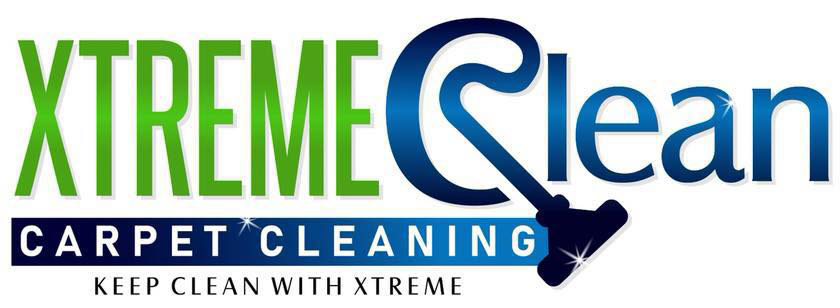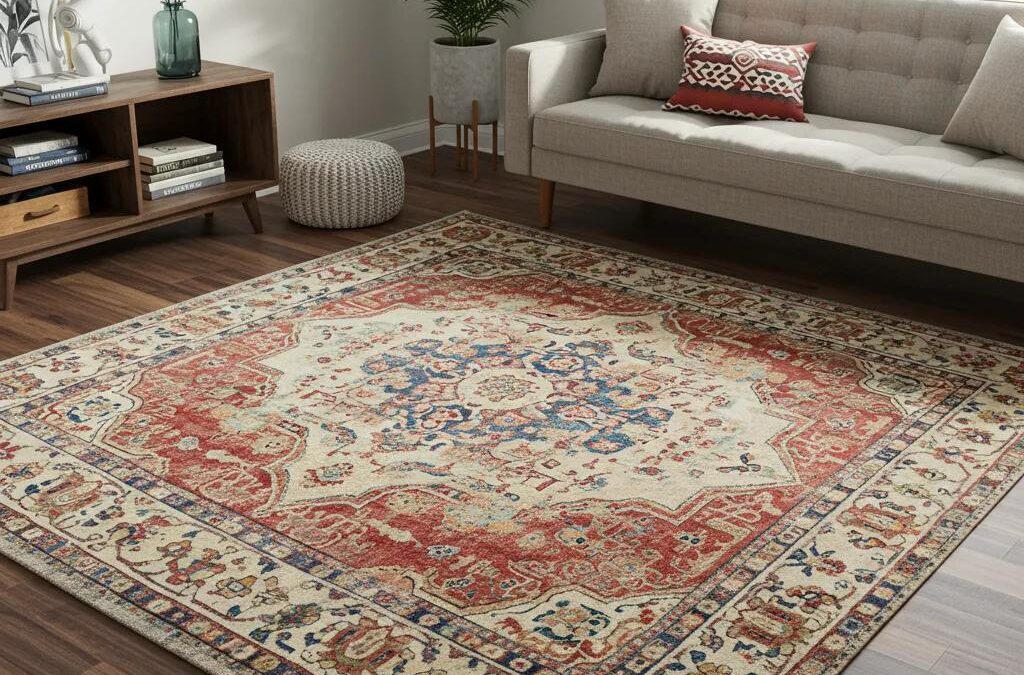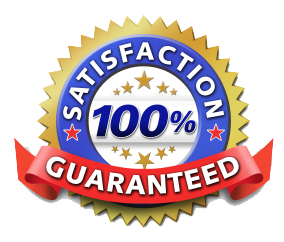Give your home a fresh start with professional area rug cleaning. We’ll banish hidden dirt and allergens for a healthier space, all while protecting your rug’s delicate fibers and vibrant colors. This guide will show you why certified specialists are essential, how to spot them, and the best cleaning methods for every material. We’ll start with the big wins of expert care and the pitfalls of DIY. Then, we’ll help you find reputable pros by looking at their certifications, insurance, and what other customers say. Next, we’ll dive into what wool, silk, antique, and synthetic rugs need. You’ll get the lowdown on hot water extraction, dry cleaning, hand washing, and special treatments for pet messes. Plus, we’ll cover clear pricing, must-know maintenance tips, how often to clean, and green options. By the end, you’ll be ready to compare area rug cleaning services near you, pick a trusted expert, and keep your cherished rugs looking stunning for years.
Why Professional Area Rug Cleaning is Essential
Professional area rug cleaning uses special equipment, approved cleaning agents, and skilled technicians to get rid of deep-down dirt and allergens without harming delicate fibers. Trusting your rugs to certified pros means consistent, top-notch results thanks to standardized checks, pre-treatment, and safe drying. Beyond just cleaning the surface, experts carefully examine fiber type, dye stability, and fringe condition before choosing the exact cleaning method, preserving both the rug’s look and its lifespan. Choosing a qualified rug cleaning service significantly boosts indoor air quality and prevents early wear, contributing to a healthier home and protecting your decorative investment.
What Are the Main Perks of Hiring Professional Rug Cleaners?
Hiring professional rug cleaners offers three key advantages:
- Deep Allergen Removal – Advanced systems effectively extract up to 95% of dust mites and pollen buried deep within rug fibers.
- Fiber Health Protection – Gentle, pH-balanced cleaners maintain the natural flexibility of wool and silk fibers, preventing brittleness.
- Vibrant Color Safeguarding – Precisely controlled moisture and quick drying prevent colors from bleeding and stop mildew from growing.
These combined benefits restore your rug’s original brilliance and extend its useful life, setting the stage for understanding the potential dangers of DIY cleaning methods.
What Risks Come with DIY Rug Cleaning?
Trying to clean rugs at home can often lead to weakened fibers, uneven drying, and stubborn soap residue. Common risks of DIY cleaning include:
- Fiber Damage from harsh scrubbing and abrasive tools.
- Color Fading when off-the-shelf products strip natural dye molecules.
- Mold and Mildew Growth in damp spots due to incomplete rinsing and slow drying.
Avoiding these negative outcomes highlights the significant value of professional cleaning and prepares you to effectively evaluate potential cleaning specialists.
How Does Professional Cleaning Boost Rug Longevity and Health?
Professional cleaning extends a rug’s life by meticulously removing abrasive grit that can wear down fibers and by applying protective treatments that resist future dirt. Technicians use moisture meters to ensure perfect drying times, effectively preventing mildew and unpleasant odors. The health benefits are substantial, including a significant reduction in airborne allergens and bacteria, which greatly supports allergy sufferers and promotes better respiratory health. With consistent professional care, your rugs will maintain their structural integrity and aesthetic appeal, allowing you to enjoy them for many years in a cleaner, healthier home.
How to Find the Best Rug Cleaning Company
Selecting a trustworthy rug cleaning company means carefully checking their credentials, customer feedback, and service guarantees. Certified providers consistently follow industry best practices and invest in ongoing technician training, ensuring the safe and effective handling of all rug types. Clear pricing, straightforward explanations of their cleaning processes, and proof of comprehensive insurance show a company’s dedication to professionalism and accountability. By thoroughly reviewing online feedback and asking the right questions, you can distinguish truly qualified specialists from general carpet cleaners and choose a partner committed to quality and your complete satisfaction.
What Certifications Should Rug Cleaning Experts Have?
IICRC certification and the CRI Seal of Approval are strong indicators that technicians follow strict cleaning and restoration standards.
Third-Party Certification: The Benchmark for Evaluating Cleaning Services… that meet certification requirements are often awarded a mark or label. Certification claims may provide useful information, but third-party certification represents the benchmark for evaluations, …Textiles for Residential and Commercial Interiors:-with STUDIO, Unknown Author, 2019
| Certification | Issuing Body | Significance |
|---|---|---|
| IICRC Certified Technician | Institute of Inspection, Cleaning & Restoration Certification | Confirms expertise in rug inspection, cleaning, and restoration techniques |
| CRI Seal of Approval | Carpet & Rug Institute | Verifies the use of effective, tested cleaning solutions suitable for various fiber types |
Earning these respected credentials requires continuous education and rigorous practical exams, ensuring that experts stay up-to-date with the latest knowledge and advanced techniques.
IICRC Certification for Carpet Cleaning TechniciansCompanies employing IICRC-certified technicians report significant improvements. Technician certification by the IICRC signifies a standardized level of expertise in carpet cleaning. Many carpet cleaning supply distributors offer suitable models typically priced below $100.The Value of Master Certifications, Unknown Author, Unknown
Why Are Licensing, Insurance, and Service Guarantees So Important?
Proper licensing shows a company follows regulatory standards and ethical business practices, while comprehensive insurance protects your property from accidental damage or loss during cleaning. Service guarantees demonstrate a strong commitment to customer satisfaction and often include options for re-cleaning or partial refunds if results aren’t as promised. Confirming these essential protections before booking gives you invaluable peace of mind and reinforces the company’s accountability.
How Can Customer Reviews Help You Choose?
Customer reviews and testimonials offer genuine insights into a company’s punctuality, communication skills, and the quality of their cleaning services. Pay close attention to feedback mentioning:
- On-Time Pick-up and Delivery, showing reliable scheduling and logistics.
- Color and Fiber Integrity Maintained, indicating careful and gentle handling.
- Responsive Customer Service, demonstrating a commitment to resolving issues effectively.
Looking for recurring themes in customer feedback helps you spot consistent strengths or potential red flags, guiding you toward truly reputable service providers.
What Key Questions Should You Ask Before Hiring a Rug Cleaner?
Before you commit, ask these specific questions to ensure clarity on expertise and transparency:
- What cleaning methods do you suggest for my rug’s specific material?
- Are your cleaning technicians certified by IICRC or recognized by CRI?
- Is your company fully insured, and do you offer written service guarantees?
- Could you provide recent customer references or examples of similar jobs?
- How do you effectively tackle tough pet stains, lingering odors, and deeply embedded dirt?
Asking these questions ensures you clearly understand their methods, qualifications, and expected outcomes, empowering you to select a trusted rug cleaning service.
How Do Different Rug Materials Affect Cleaning Needs?
Each rug material has unique characteristics that determine the safest and most effective cleaning approach. Wool needs gentle handling and neutral pH solutions, while silk requires minimal moisture and special solvents. Antique and Oriental rugs often have natural dyes and delicate foundations, calling for careful hand washing and close supervision. Synthetic rugs can usually handle more robust hot water extraction but still greatly benefit from pre-treatment and quick drying. Understanding these material-specific needs allows you to communicate your requirements precisely and achieve the best possible cleaning results.
Material-Specific Cleaning: Elucidating Surface Interactions for Enhanced Hygiene… surface materials significantly influence pathogen persistence and transmission. Consequently, there is a requirement for material-specific…Recognizing object surface materials to adapt robotic disinfection in infrastructure facilities, D Hu, 2022
What Are the Specific Cleaning Needs for Wool Rugs?
| Rug Type | Preferred Method | Key Precaution |
|---|---|---|
| Wool Area Rug | Dry compound or low-moisture encapsulation cleaning | Avoid harsh alkaline detergents and excessive water saturation |
Keeping wool’s natural lanolin intact is vital for maintaining its softness and resistance to dirt. Delicate wool fibers need exceptionally careful handling to preserve the pile’s integrity and ensure colors don’t fade.
How Should Silk Rugs Be Professionally Cleaned?
Silk rugs require minimal moisture and the use of specialized solvent-based treatments to prevent fiber damage. Gentle vacuuming removes surface dust, followed by careful spot testing of non-aqueous cleaning agents. Professionals typically use low-humidity dry cleaning systems that effectively lift soils without water immersion, preserving the silk’s natural sheen and structural stability.
What Makes Oriental and Antique Rugs Unique in Their Cleaning Needs?
Oriental and antique rugs are special because of their natural dyes, hand-knotted construction, and intricate fringes, all of which need meticulous hand washing and detailed inspection. Cleaning professionals start by carefully protecting the tassels, then apply mild detergents by hand, followed by gentle rinsing and careful removal of excess moisture. Controlled drying while maintaining tension is crucial to prevent distortion, ensuring these valuable heirloom pieces keep their original shape and value.
How Are Synthetic Rugs Typically Cleaned?
Synthetic rugs, often made from materials like polyester or polypropylene, are well-suited for hot water extraction and pH-balanced shampoos. Technicians carefully adjust water temperature and suction power to effectively remove embedded dirt without damaging the backing materials. High-speed airflow systems are then used to quickly remove leftover moisture, reducing the risk of mildew and adhesive breakdown in these synthetic constructions.
Top Professional Area Rug Cleaning Methods
Professional specialists use four main cleaning methods—hot water extraction, dry cleaning, hand washing, and targeted pet stain treatment—each suited for specific rug types and soiling levels. Hot water extraction uses pressurized, heated water and special detergents to lift deep dirt from durable fibers. Dry cleaning relies on solvent-infused powders for materials sensitive to moisture. Hand washing offers precise, artisanal care for delicate antique and silk rugs. Specialized pet odor treatments combine enzyme solutions with ozone or heat processes to effectively neutralize organic stains and smells.
How Does Hot Water Extraction Work and When Is It Best?
Hot water extraction involves injecting heated water and cleaning agents deep into rug fibers under high pressure, immediately followed by powerful vacuum extraction of the dirty water. This method is especially effective for synthetic and heavily soiled rugs, as it thoroughly flushes out deep dirt and allergens. The rapid extraction and drying equipment used significantly minimizes fiber stress and reduces the chance of mildew.
What Is Dry Cleaning and Which Rugs Benefit Most?
Dry cleaning involves applying special cleaning powders or solvents that effectively bind with oils and grime, allowing technicians to brush or vacuum away the residue. This method is essential for moisture-sensitive rugs, like silk, antique, and hand-woven wool varieties, to prevent water-related damage. Dry cleaning is highly effective at preserving delicate dyes and minimizing fiber distortion.
Cleaning Efficacy of Dry Steam Cleaning on CarpetsIn 20 homes, additional dust samples (termed VAC-DSC) were collected from the side of the carpet assigned to dry steam cleaning prior to repeat vacuuming (Figure 1). The…Cleaning efficacy of high-efficiency particulate air-filtered vacuuming and “dry steam” cleaning on carpet, LM Yiin, 2007
When Is Hand Washing the Necessary Approach for Area Rugs?
Hand washing provides a controlled and gentle cleaning process perfect for high-value Oriental, antique, and custom-dyed rugs. Technicians use soft brushes, mild detergents, and manual rinsing to tackle specific stains or overall dirt. This artisanal method avoids the mechanical scrubbing that could potentially loosen knots or fray the fringes.
How Are Pet Stains and Odors Professionally Removed?
Professional pet stain and odor removal involves a multi-step process combining enzyme pre-treatment, targeted spot extraction, and advanced drying techniques.
- Step 1: An enzyme solution is applied to break down urine proteins and neutralize ammonia odors.
- Step 2: High-pressure extraction is used to thoroughly lift embedded organic residues.
- Step 3: Ozone or heat treatment is used to eliminate any lingering smells.
This thorough process effectively restores the rug’s freshness and prevents stains from reappearing or attracting pests.
What Is the Typical Cost of Professional Area Rug Cleaning?
The cost of professional area rug cleaning depends on several factors, including the rug’s size, material, how dirty it is, and any special treatments needed. Clear pricing ensures you understand every part of your quote, avoiding surprise charges. Generally, standard area rugs fall into a moderate to premium price range, depending on the fiber type and any special services requested. By comparing estimates and asking for itemized breakdowns, you can get fair pricing that fits your specific cleaning needs and budget.
What Factors Influence the Pricing of Area Rug Cleaning?
Several key attributes significantly impact the final cost:
- Rug Size and Pile Density – Larger and denser rugs require more time, labor, and cleaning solution.
- Material Composition and Weave Type – Silk and antique rugs need specialized, often more labor-intensive, processes.
- Condition and Soil Level – Heavy dirt or pet odors usually require extensive pre-treatment.
- Additional Services Requested – Fringe repair, mothproofing, and protective stain applications will increase the overall quote.
Carefully considering these elements will help you estimate pricing accurately and compare service providers more effectively.
What Is the Average Price Range for Area Rug Cleaning Services?
For standard wool or synthetic area rugs, pricing typically ranges from $1.50 to $4.00 per square foot. However, for delicate silk or valuable antique pieces, the cost can range from $3.00 to $7.00 per square foot due to the specialized care and expertise required. These average figures serve as a helpful guide for budget planning and enable you to conduct a more informed comparison of service estimates.
How Can You Ensure Transparent and Fair Pricing?
Always ask for written, itemized estimates that clearly separate the base cleaning fee from any extra services. Ask about potential discounts for cleaning multiple rugs and any available seasonal specials. Make sure the quote clearly lists any inspection fees, charges for pick-up and delivery, and any extra costs for particularly tough stains. Open communication upfront is key to preventing misunderstandings and ensuring a fair and equitable service agreement.
How Can You Maintain Your Area Rugs Between Professional Cleanings?
Regular upkeep is key to keeping your rug looking great and extending the time between professional cleanings. Consistent vacuuming, quick attention to spills, and rotating the rug strategically help wear even out. Using rug pads provides cushioning, prevents slipping, and reduces friction against hard floors. Setting up a regular maintenance routine will protect your rug’s condition and help maintain healthy indoor air quality between expert cleaning sessions.
What Are the Best Practices for Routine Rug Maintenance?
- Weekly Vacuuming to effectively remove surface debris before it can get deeply embedded.
- Immediate Spot Treatment for spills using only cleaning solutions approved by the manufacturer.
- Periodic Rotation every three to six months to ensure even wear from foot traffic.
Putting these simple steps into practice will help prolong your rug’s freshness and support the overall health of its fibers.
How Do Rug Pads and Proper Placement Extend Rug Lifespan?
A high-quality rug pad is essential for preventing wear on the rug’s backing, providing crucial cushioning, and improving airflow underneath the rug. Placing rugs away from direct sunlight helps reduce fading caused by UV rays. Positioning heavy furniture on protective coasters or blocks can help maintain the pile’s resilience and prevent permanent indentations.
When Should You Schedule Professional Cleanings for Your Rugs?
Most area rugs benefit from professional cleaning about every 12 to 18 months. However, this frequency can change depending on foot traffic, household pets, and any allergy concerns. High-traffic areas or homes with children and pets might need professional service twice a year. Sticking to a regular cleaning schedule is the best way to maximize your rug’s fiber lifespan and maintain a healthy living environment.
What Eco-Friendly Options Are Available for Area Rug Cleaning?
Eco-friendly rug cleaning uses non-toxic solutions, biodegradable detergents, and energy-efficient equipment to lessen environmental impact while prioritizing your household’s health. Certified green services actively avoid harsh chemicals, conserve water, and reduce the release of volatile organic compounds. Choosing sustainable providers aligns your home care habits with broader wellness goals and environmentally conscious values.
How Do Eco-Friendly Cleaning Solutions Benefit Your Health and the Environment?
Green cleaning solutions feature plant-based surfactants and enzyme blends designed to break down dirt effectively without leaving harmful residues. These biodegradable agents significantly lower the chance of allergic reactions and help maintain excellent indoor air quality. Plus, environmentally friendly cleaning processes save water, reduce chemical runoff into waterways, and cut carbon emissions through energy-efficient drying systems.
Which Certified Rug Cleaners Offer Non-Toxic and Sustainable Services?
Look for providers who have earned endorsements from respected green certification groups, like Green Seal or ECOLOGO. These certifications confirm the safety and effectiveness of eco-friendly products. Certified specialists regularly check their supply chains to ensure all detergents, solvents, and packaging meet strict environmental standards, delivering sustainable cleaning solutions without sacrificing quality.
How Can You Verify a Rug Cleaning Company’s Eco-Friendly Practices?
Ask for specific details about their product formulas and any third-party certifications they hold. Request they show their use of water-recycling systems, energy-efficient machinery, and waste-reduction methods. Transparent companies are usually happy to share material safety data summaries and environmental policy statements, clearly showing their commitment to a healthier home and planet.
Consistent professional care, smart choices in service providers, and diligent maintenance are key to keeping your area rugs beautiful and clean for years. By carefully checking certifications, cleaning methods, and pricing transparency, you can secure expert services that respect both your home and the environment. Contact Xtreme Clean 95 today to connect with certified IICRC specialists who offer thorough, material-specific cleaning processes and eco-friendly solutions designed for your unique rug needs. Protect your investment now and enjoy expertly refreshed floor coverings tomorrow.



